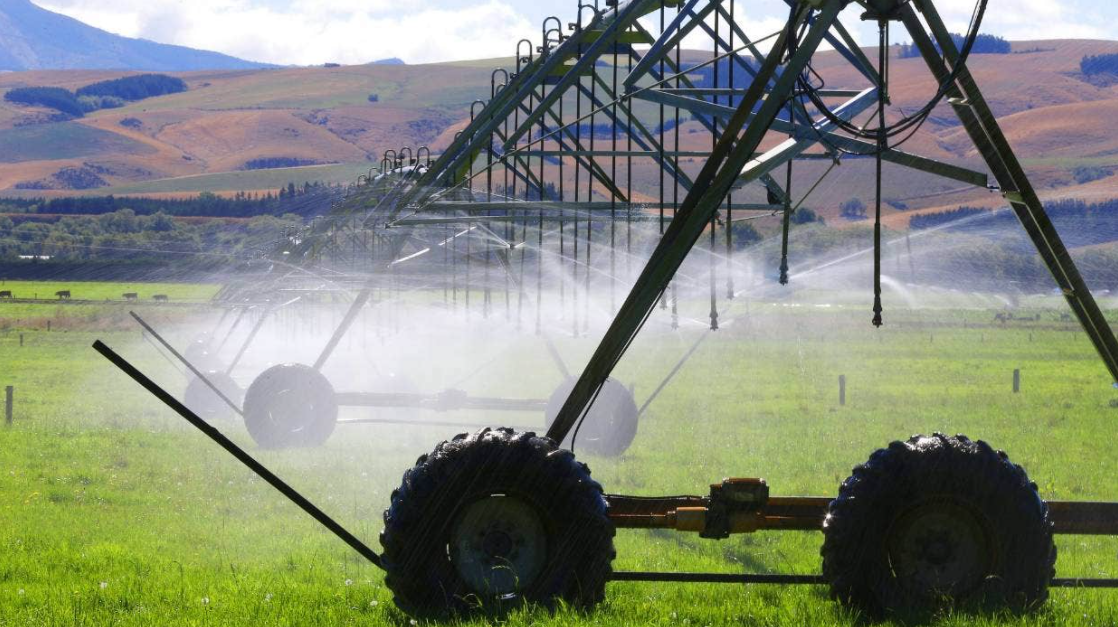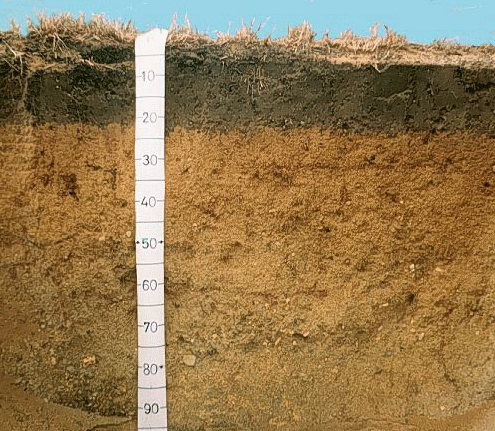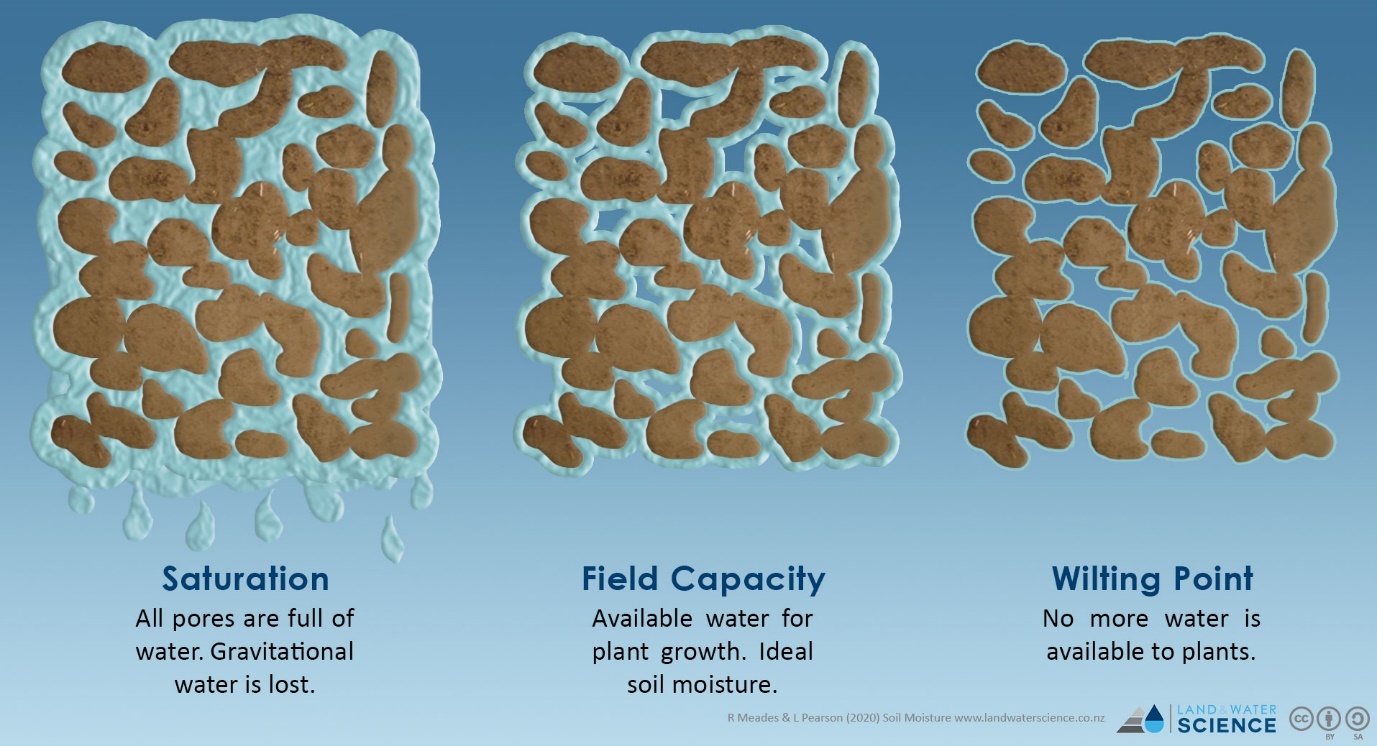Precision irrigation (variable rate)
What
Irrigation practices can be improved so that water is only applied when the plants need it, and the soil profile has the capacity to absorb it. As there is variation in the soils under irrigation, it makes sense to vary the rate of water application across the irrigated area. Over application of water from irrigation can lead to over saturating soils which can increase leaching of nutrients into waterways.
Irrigation manangement can also prevent soil moisture deficit from occuring in soils vulnerable to natural bypass.

Image source: Tetsuro Mitomo/Fairfax NZ.
Why
Under conventional irrigation (Uniform Rate Irrigation or URI), parts of an irrigated paddock are over or under-irrigated due to spatial variability in soil water-holding capacity, infiltration rates and topography. Under-irrigated areas are subject to water stress, resulting in production loss, while over-irrigated areas suffer from poor plant health and nutrient leaching.
Variable Rate Irrigation (VRI) systems are designed to achieve better irrigation efficiency. Irrigation efficiency is commonly referred to as application efficiency and depends on three main factors:
- Applying the correct depth of water.
- A uniform application.
- The application rate being less than the soil’s infiltration rate.
Application efficiency is the percentage of applied water that is retained in the root zone (or target area) after an irrigation event. VRI allows for maximum application efficiency of centre-pivot or lateral-move irrigators. VRI systems achieve this by utilising nozzle and speed control, soil mapping technology, site-specific soil moisture monitoring, and other decision support tools. Variable rate irrigations systems can also be programmed to apply water only where needed, so laneways and farm tracks can stay dry.
Research by Hedley et al. (2010) simulated results for a Canterbury site show that water savings between 2004 and 2009 were between 4 and 7% for any one season. The years with larger savings related to rainfall events during the irrigation period. Drainage during the irrigation period was reduced by between 16 and 33%.
Irrigation management has other benefits including conserving water (reducing water use), reduction in energy costs, and allowing the soil to have pore space filled with oxygen to help plants grow. Variable rate irrigation also ensures there is space left in the soil profile to utilise rainfall. It can also be used to prevent cracking in soils vulnerable to natural bypass under soil moisture deficit.
For variable rate irrigation, it is important to know the water holding capacity of the soil to determine how much water storage capacity the paddock has, and to determine how much irrigation should be applied. This information can be used to make irrigation schedules for the soil conditions in each paddock. Other factors that should be considered in an irrigation schedule include the infiltration rate of the soil, the size of the well, the water allocation, the growth stage of the crop, the depth of the root system, and the weather forecast.
Water holding capacities of different soils
Sands have low water storage but most of the water can be abstracted by the plant resulting in low water holding capacity (10 mm).
Loams have high water storage and most of the water can be abstracted by the plant resulting in high water holding capacity (20 mm).
Clays have high water storage but they retain much of the water and do not make it available to the plant resulting in low water holding capacity (14 mm).

Image source: NZ Soils
Commonly used terms used to express the amount of water in the soil
Saturated soil - All pores (gaps in the soil) are filled with water. Plant roots are short of air for oxygen and gas exchange and growth is limited.
Field capacity - Macro-pores in the soil provide air spaces and oxygen. Micro-pores in the soil are filled with water held by capillary forces. Plant roots easily take up water. Optimum for plant growth.
Stress point (Trigger point) - Finest pores in the soil retain water held by strong capillary forces. Plant roots take up water with increasing difficulty. The plant may wilt during the day but recover at night.
Wilting Point – Only hygroscopic water (water absorbed from the atmosphere) remains in soil. This water is bound very strongly to soil particles and plant roots are unable to take it up thus causing them to wilt and not recover.

References
Hedley, C. B., S. Bradbury, J. Ekanayake, I. J. Yule, and S. Carrick. 2010. Spatial irrigation scheduling for variable rate irrigation. Proceedings of the New Zealand Grassland Association 72:97-101.
Irmack. S. & Rathje. W.R. (2004). Plant growth and yield as affected by wet soil conditions due to flooding or over-irrigation.
Lilburne, L. R., Webb, T. H., & Francis, G. S. (2003). Relative effect of climate, soil, and management on risk of nitrate leaching under wheat production in Canterbury, New Zealand. Soil Research, 41(4), 699-709.